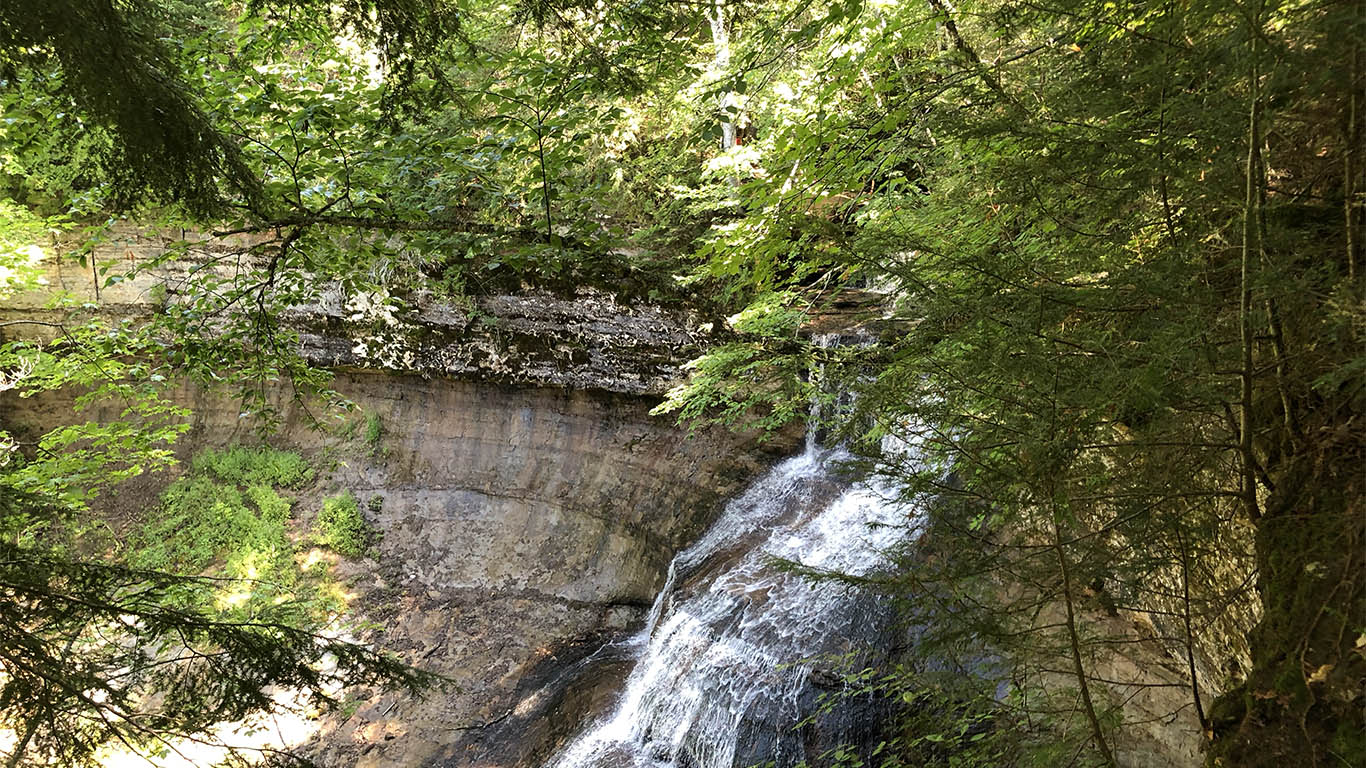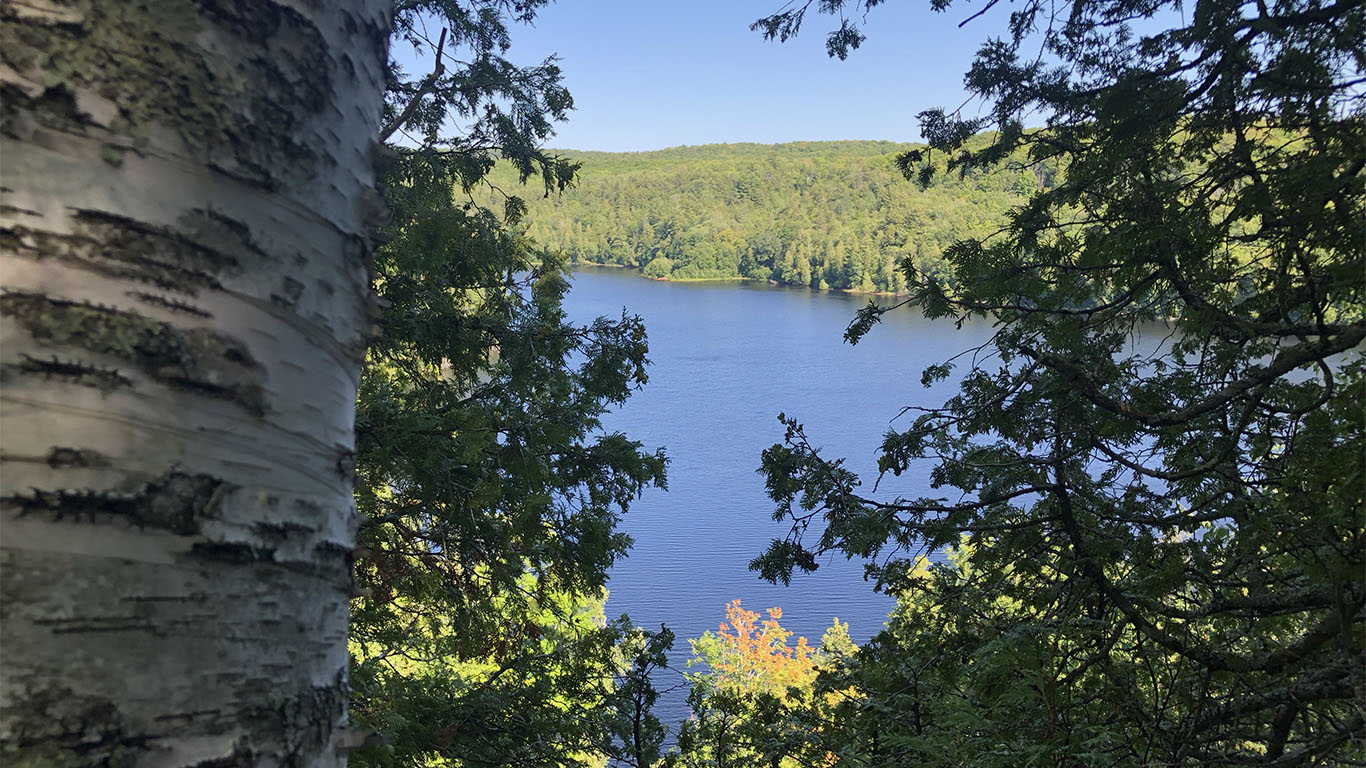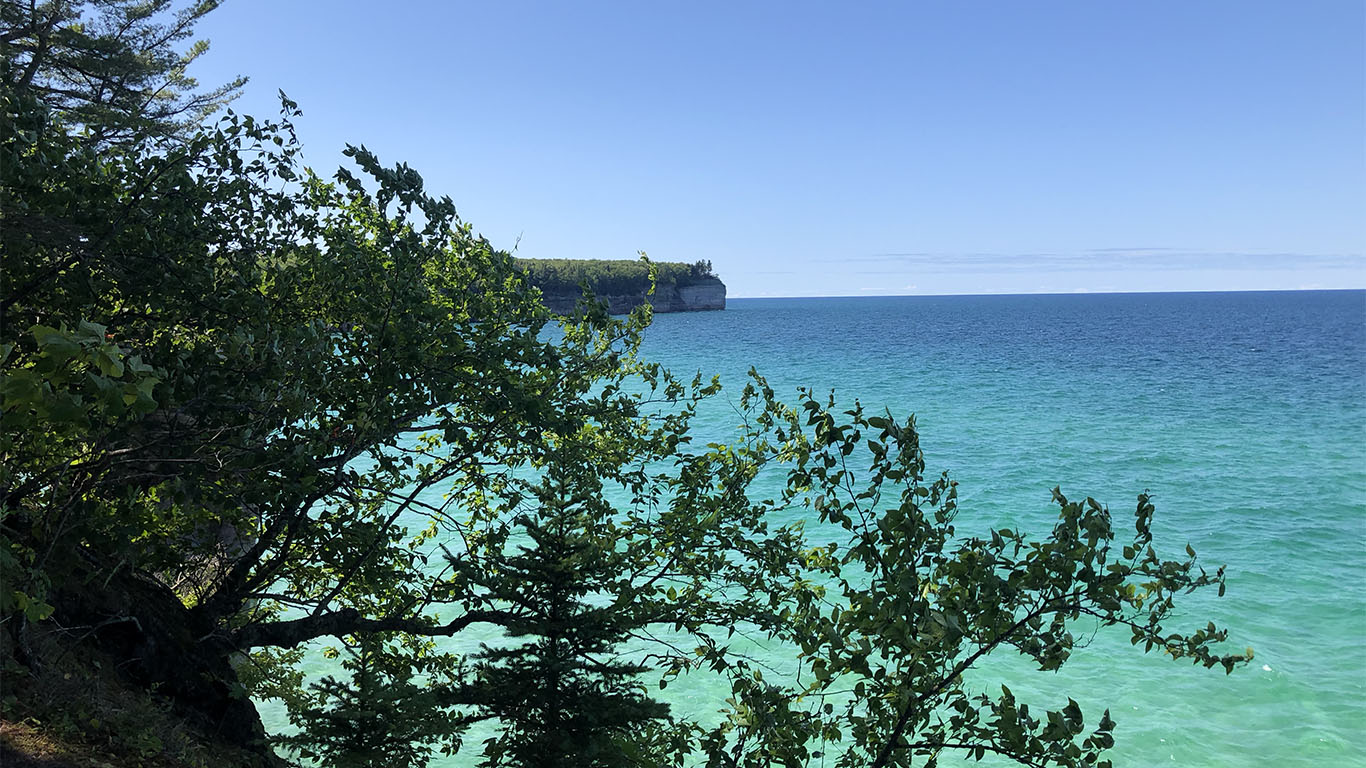Although we both grew up in the Chicago area, my wife and I had never spent much time in the Upper Peninsula of Michigan. We decided to change that last week. As we drove north, we weren’t sure what to expect from our latest adventure.
That’s the word that describes the Upper Peninsula best: adventure. The UP is the strip of land between Lake Superior and Lake Michigan that connects Wisconsin with Canada, and it’s one of the most natural and undisturbed parts of the contiguous United States. It has a tremendous variety of beautiful landscapes. On a hike that we took at Chapel Falls, on the northern coast of the UP, we encountered sandy pine barrens, granite-rock waterfalls, sandstone rock cliffs, a glacial lake, sand dunes, and a pure sand beach on the world’s largest freshwater lake, where the water was the clearest we had ever seen. This diversity of landscapes made for a thrilling walk. We eagerly anticipated each turn, wondering what we would see next. It was a hiatus from the bustle of our everyday lives, an escape to the wilderness.
I think of my experience at Marquette Golf Club’s Greywalls Course in the same way. Located in Marquette, the UP’s largest town, Greywalls possesses a supreme diversity of landscapes. There are stunning views of Lake Superior, gargantuan granite outcroppings, the Oriana Creek, ravines, and a sandy dunescape. The setting is unique in the world of golf. But Greywalls is not just about views; it also has a stellar design by Mike DeVries.
The 231-acre site is so rugged and littered with constraints that I doubt more than a few architects would have been able to figure out a cohesive routing on it. In addition to severe terrain and immovable masses of granite, DeVries also had to navigate a gas line and the Oriana Creek. It’s impressive that he put together 18 holes on this land, much less 18 holes with smooth green-to-tee transitions that allow for walking.
DeVries’s design maintains a consistent theme from start to finish: you versus the daunting natural forms of the UP. To let the land shine, DeVries practiced admirable restraint. The 1st hole, for instance, is a downhill par 5 that sweeps to the right. It features two bunkers on the left side of the tee-shot landing area but is bunkerless the rest of the way. In all, the course has and seven bunkerless holes. DeVries must have known that, on a site with massive elevation changes and spectacular rock outcroppings, he didn’t need many bunkers to generate interest.

The 1st hole at Greywalls
The first eight holes navigate the property’s most severe terrain, asking players to hit off, over, around, and into the ancient granite formations. The natural monuments were formed from the lower edge of the Canadian Shield, and they are intimidating. Wise players will shed their anxieties and see that DeVries has offset the punitiveness of the rock with helping contours, wide corridors, and large targets.
-
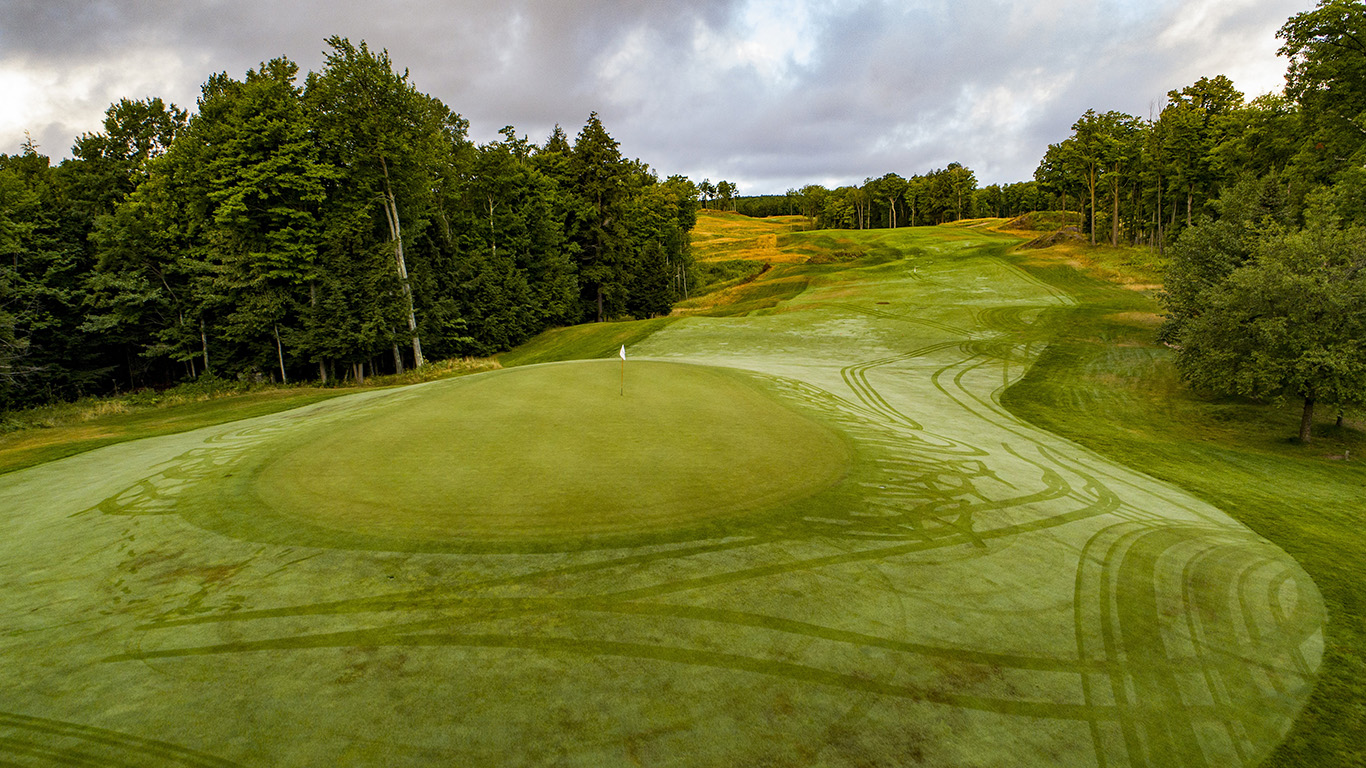
Looking back on the 1st hole at Greywalls
-
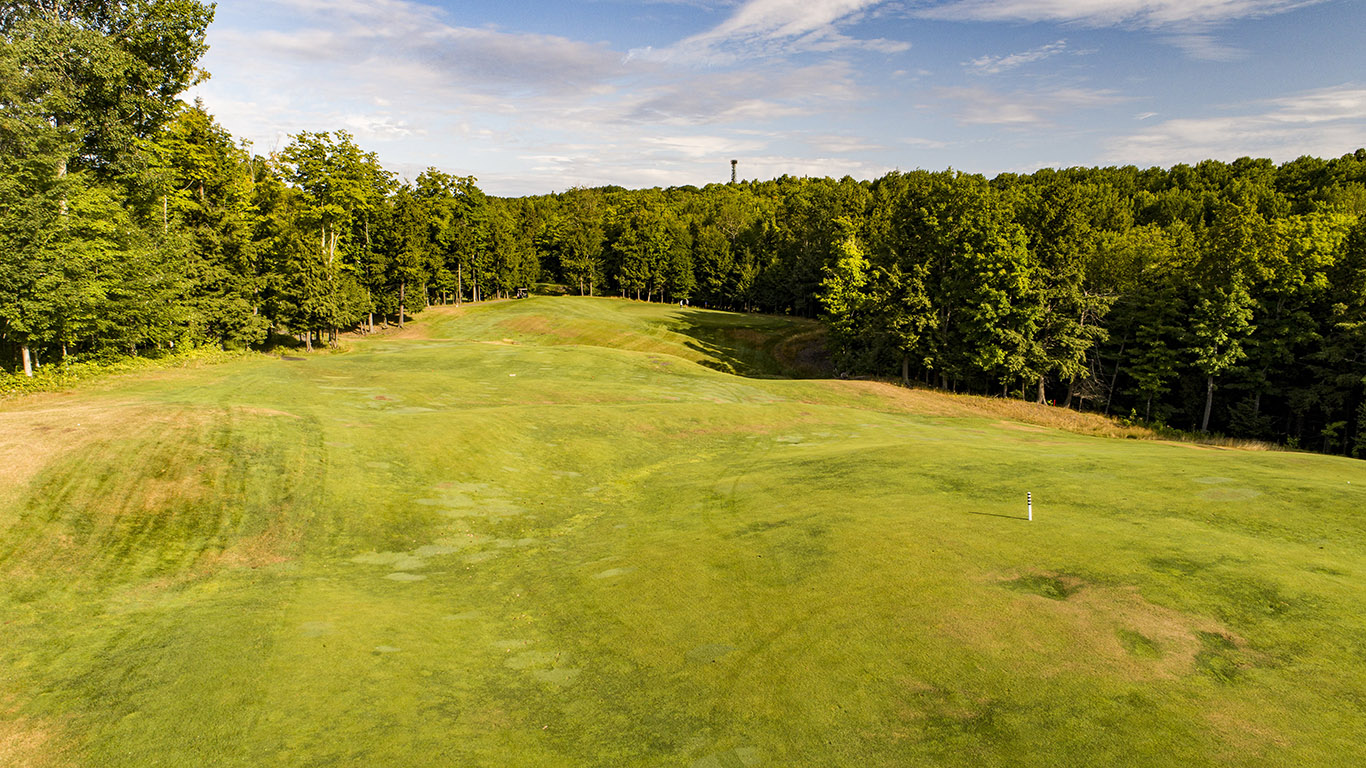
The 2nd hole at Greywalls
-
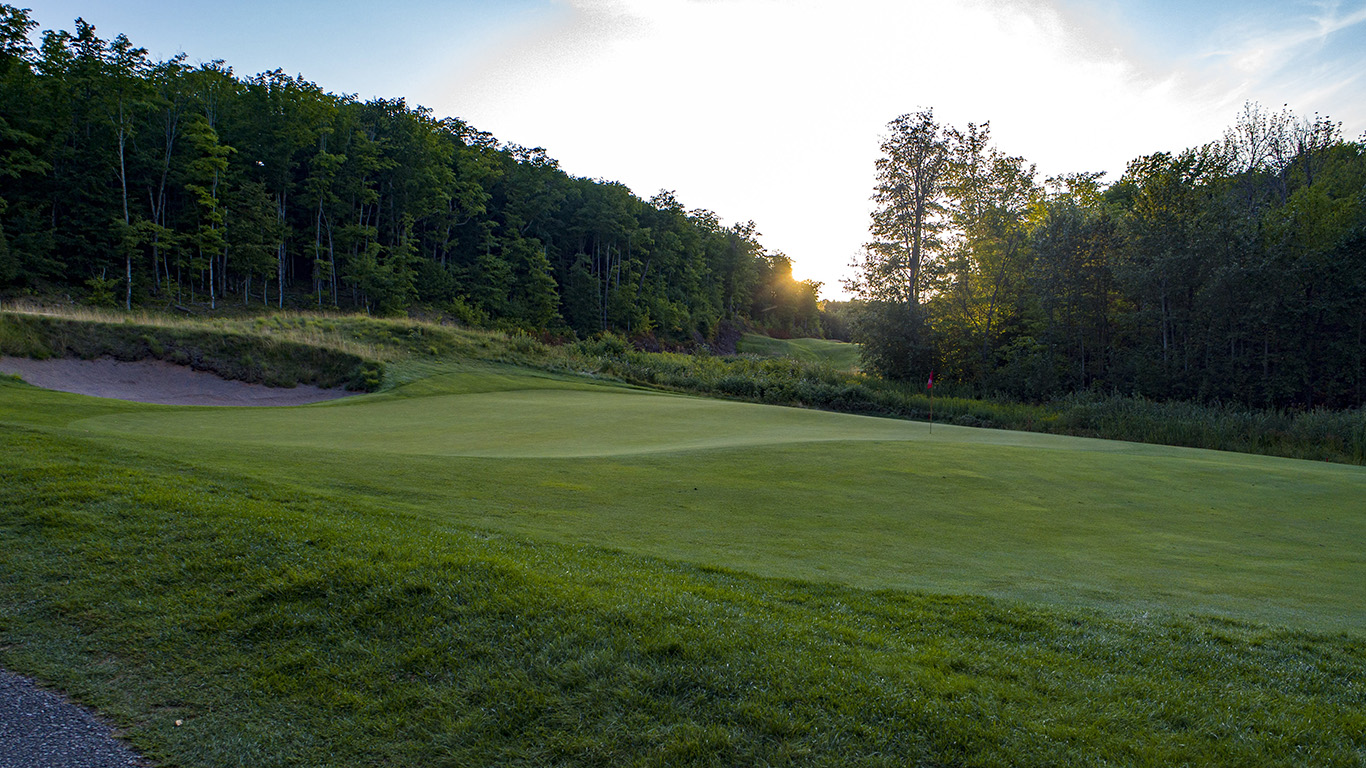
The 3rd green at Greywalls
-
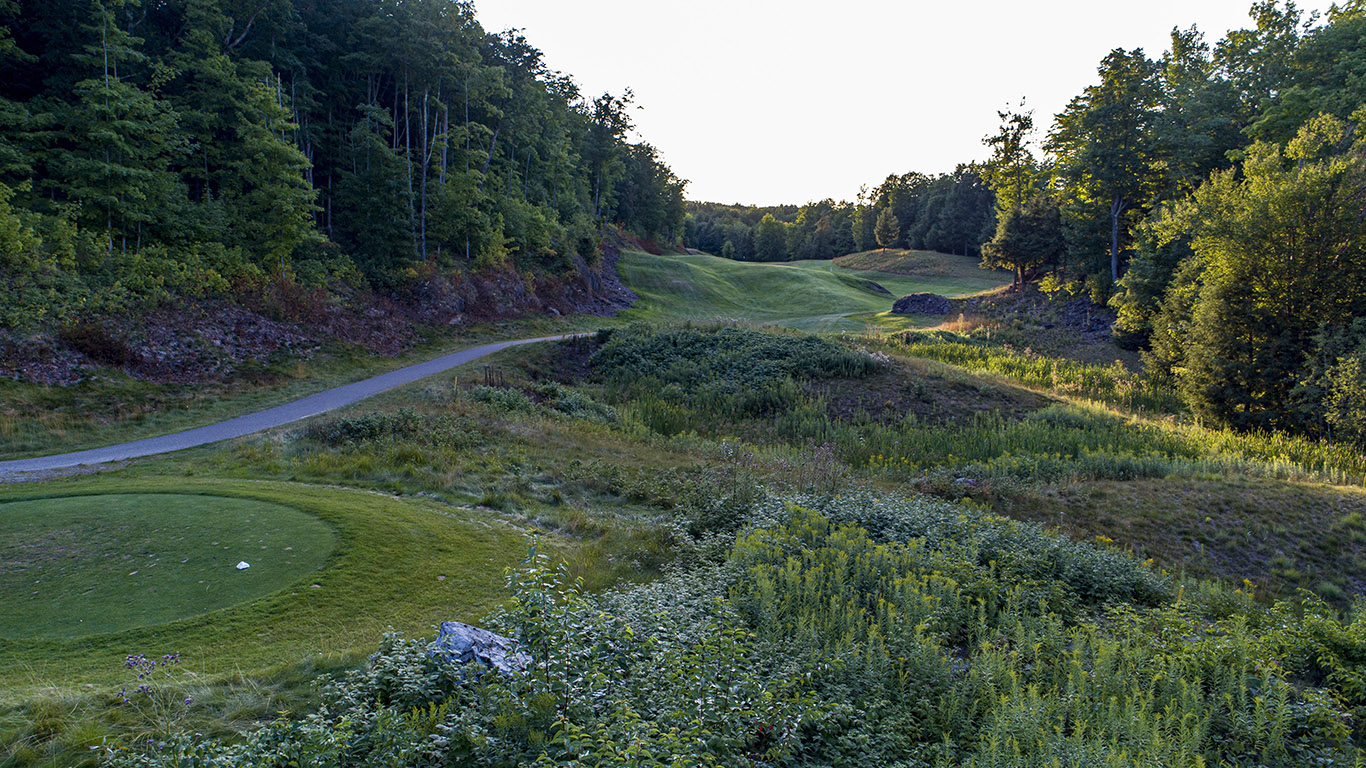
The intimidating 4th tee shot at Greywalls
-
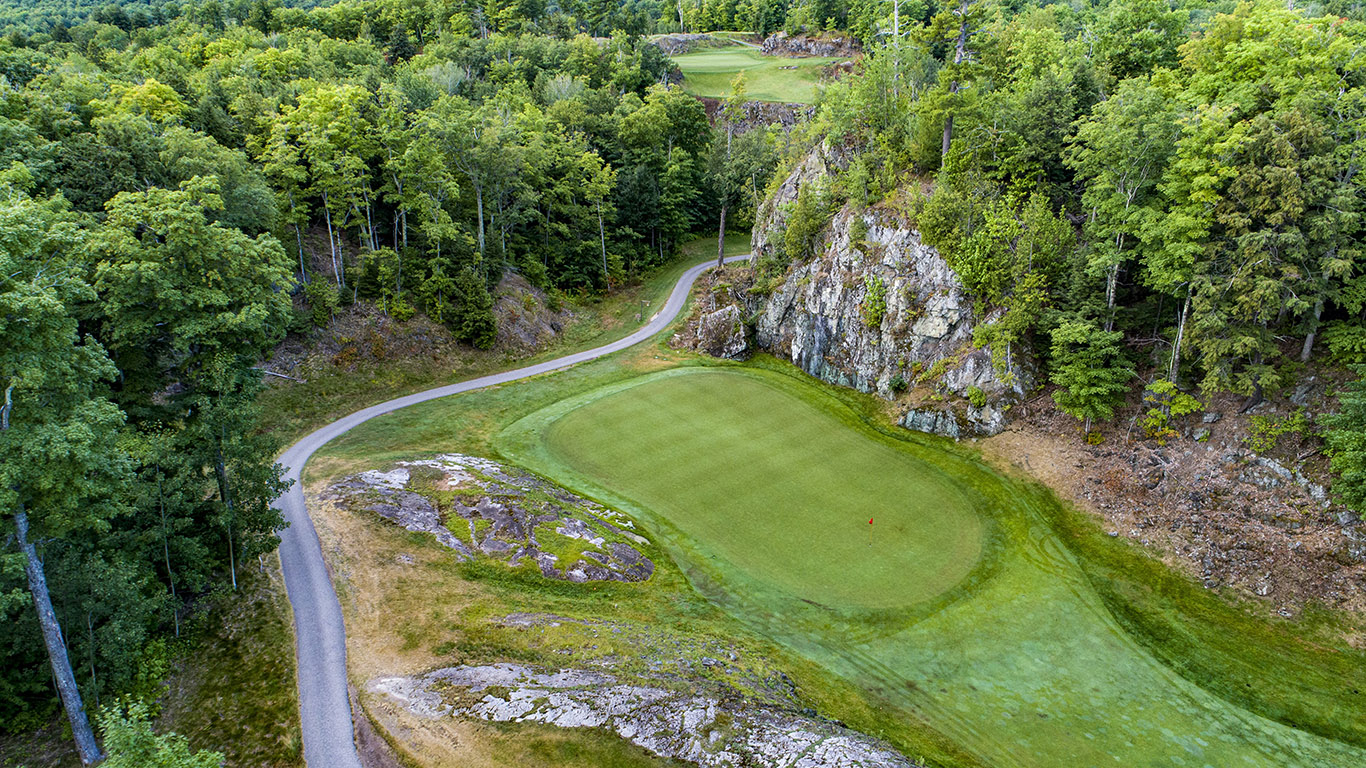
The 5th green at Greywalls
-
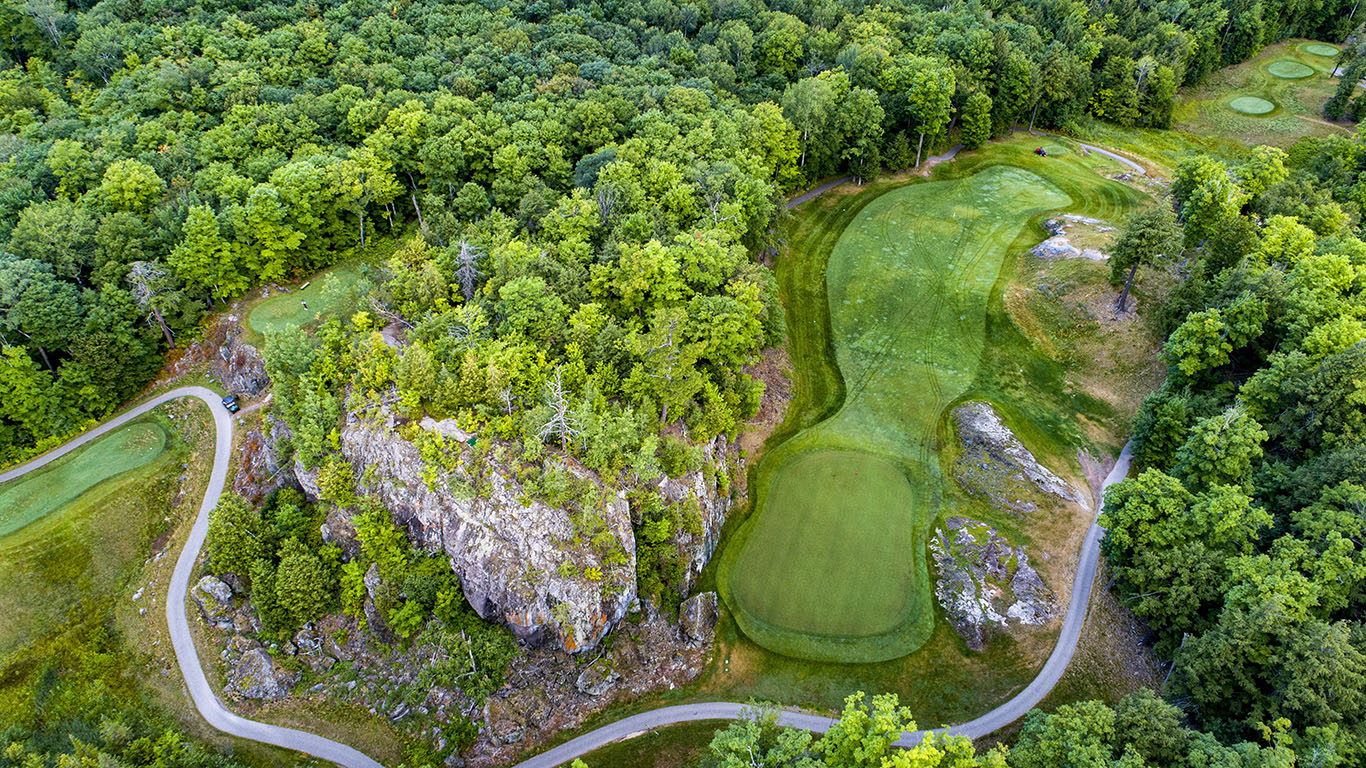
Looking down on the 5th hole at Greywalls
-

The 6th hole at Greywalls
-
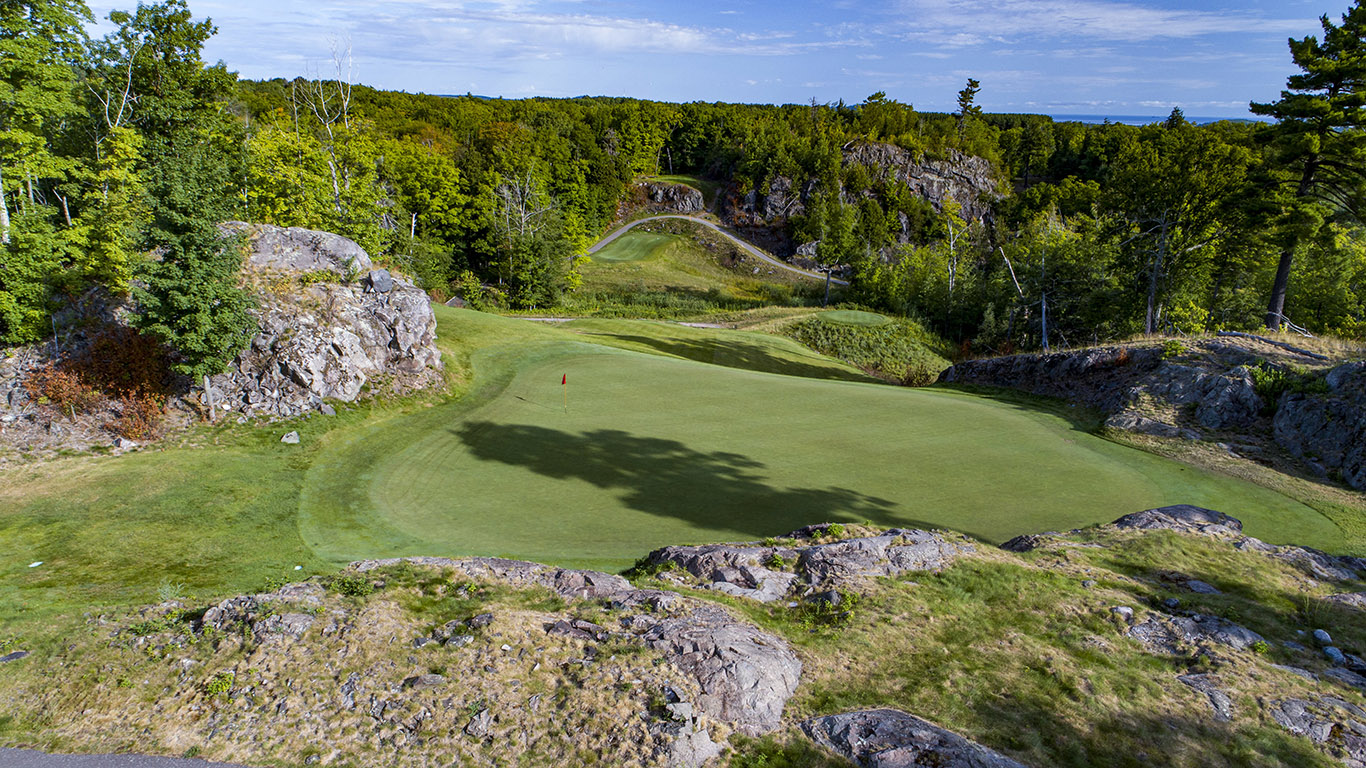
Looking back on the 6th hole at Greywalls
-
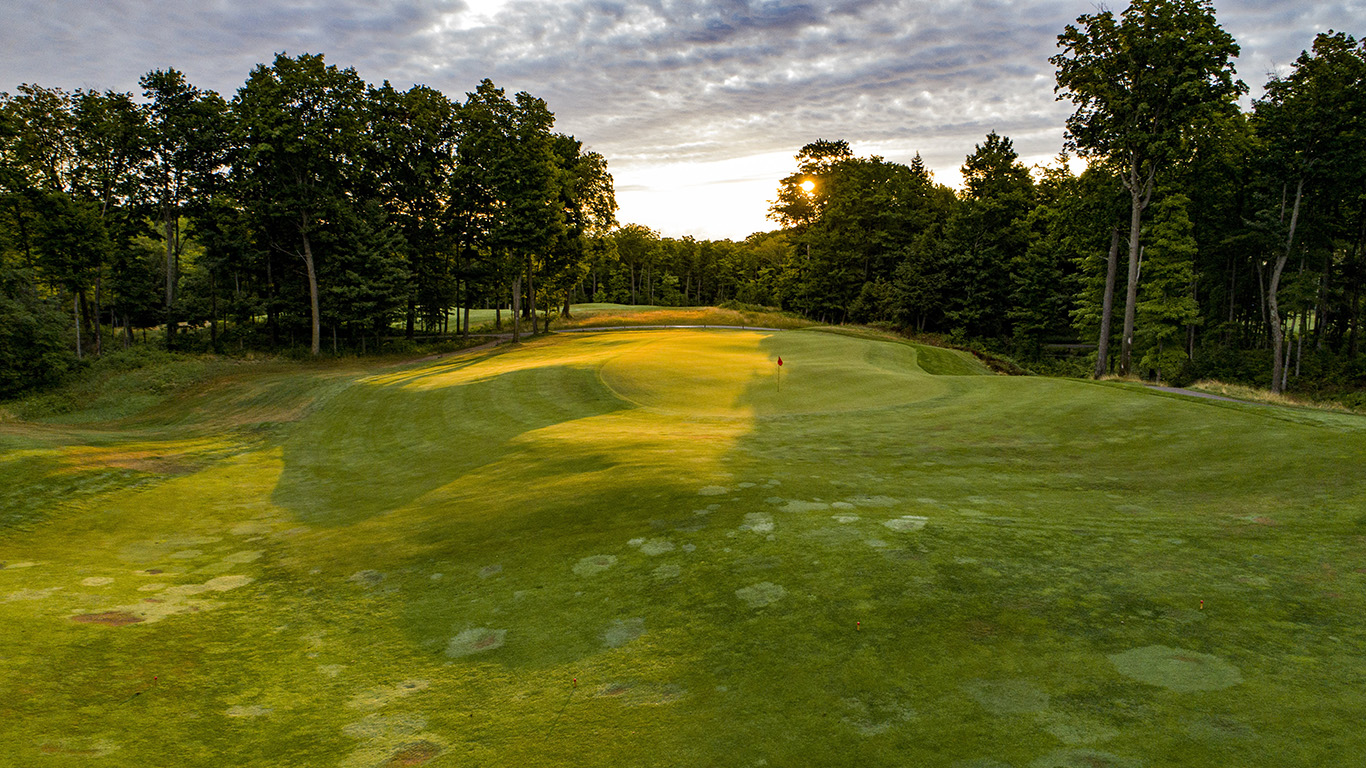
The 7th green at Greywalls
The 9th and 10th play along a ridge that serves as a transition to the other distinct part of the routing, the 11th through 15th. The 11th plays off the ridge into a sandy forest. While this stretch of holes lacks jaw-dropping profusions of granite, it features some great golf. Nos. 11 through 15 possess micro-movements in their fairways as well as the strongest greens on the course. The 16th moves golfers out of the sandy setting and back to large-scale, rock-studded terrain. DeVries’s guided tour of the wilderness closes with the dramatic, downhill 18th.
-
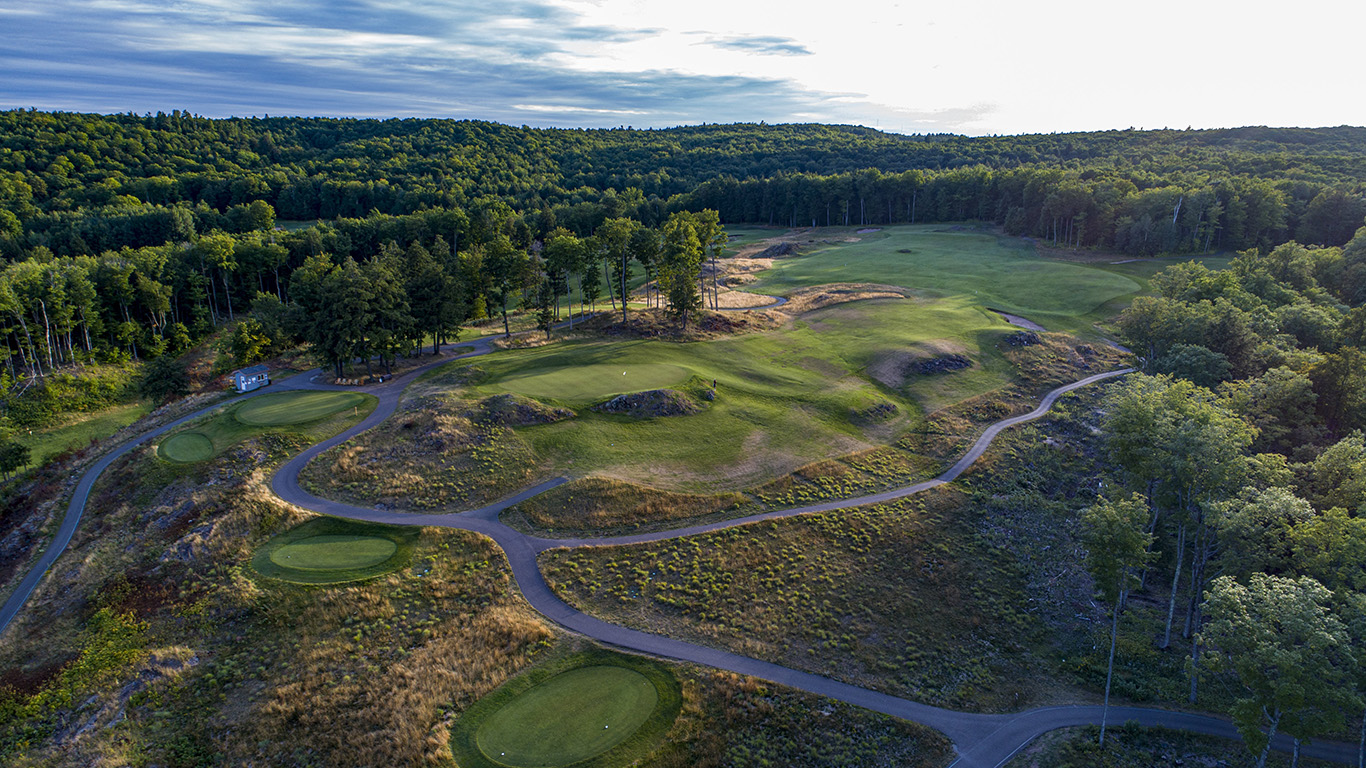
The 9th hole at Greywalls
-
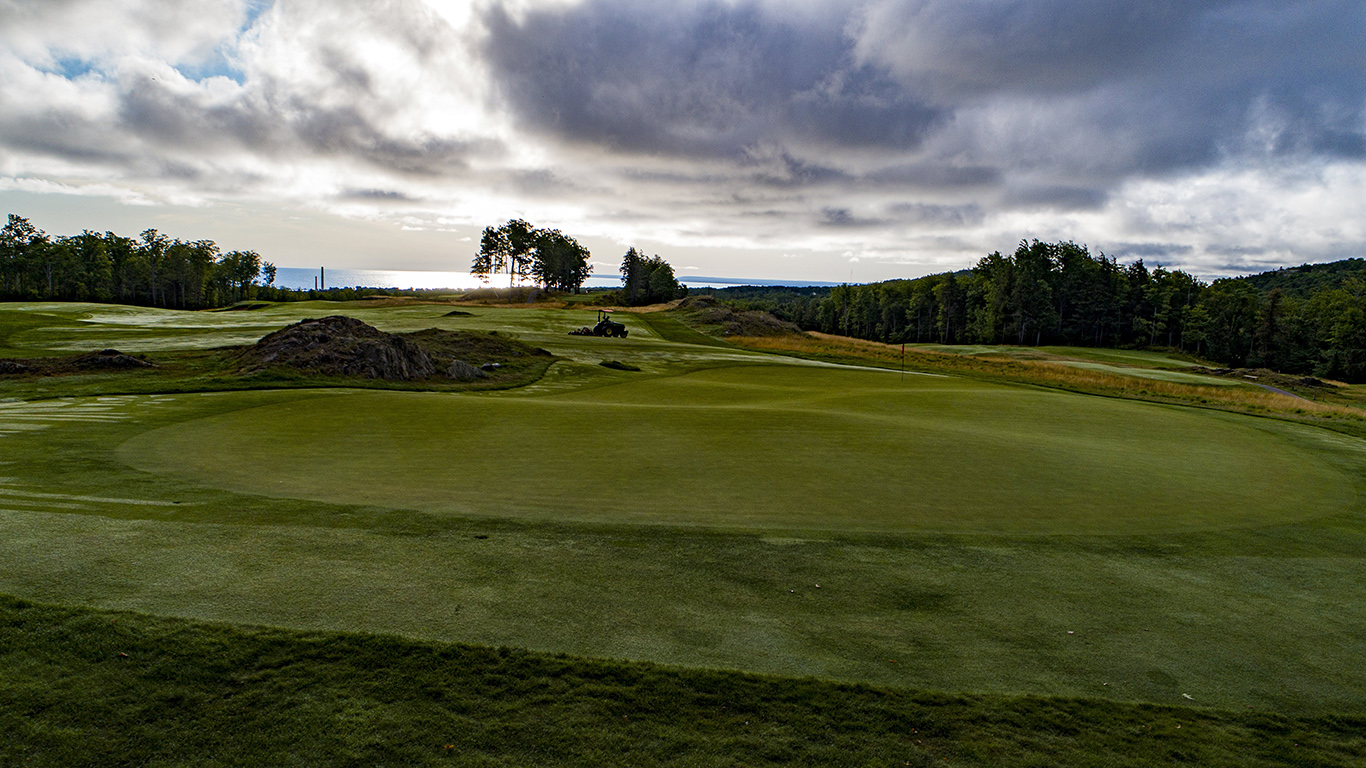
Behind the 10th green at Greywalls
-
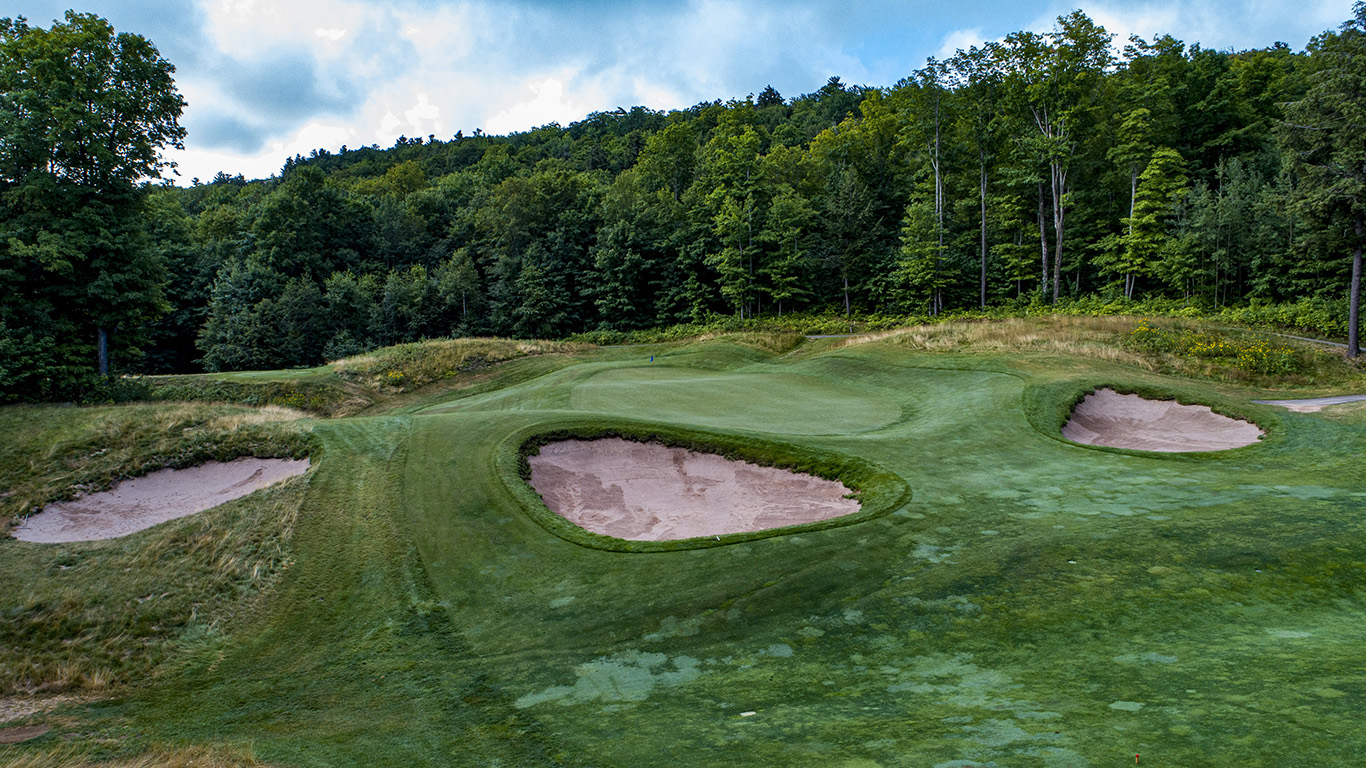
The 11th green at Greywalls
-

The 12th hole at Greywalls
-
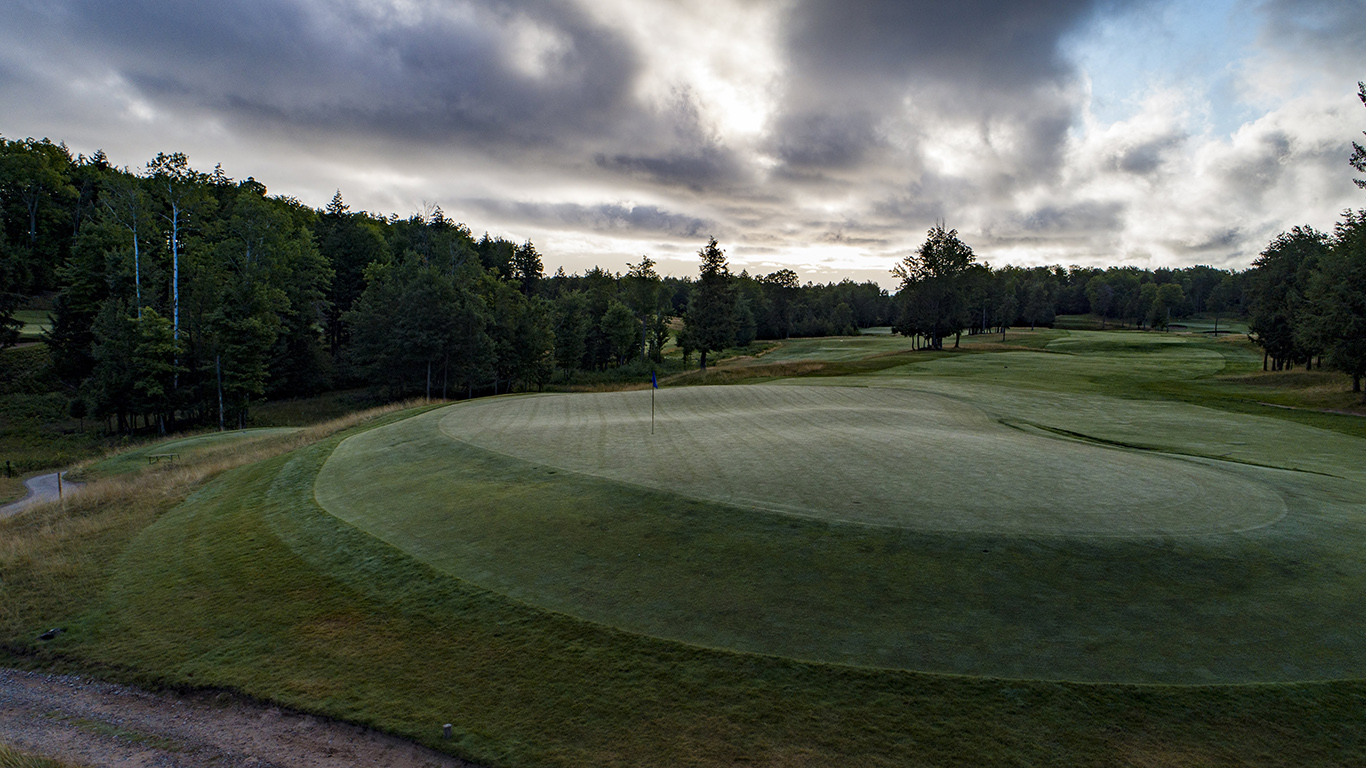
Behind the 13th green at Greywalls
-

The 13th (left) and 14th (right) holes at Greywalls
-
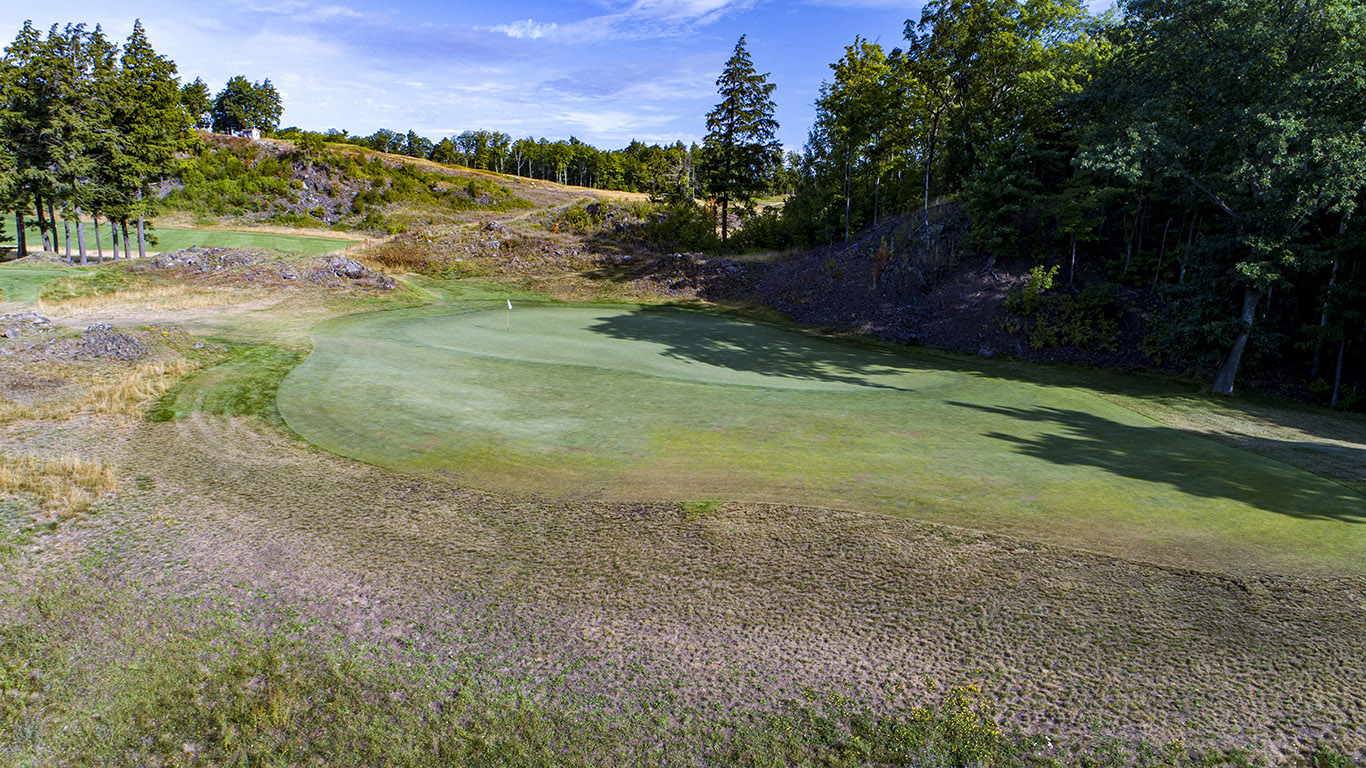
The 15th green at Greywalls
-
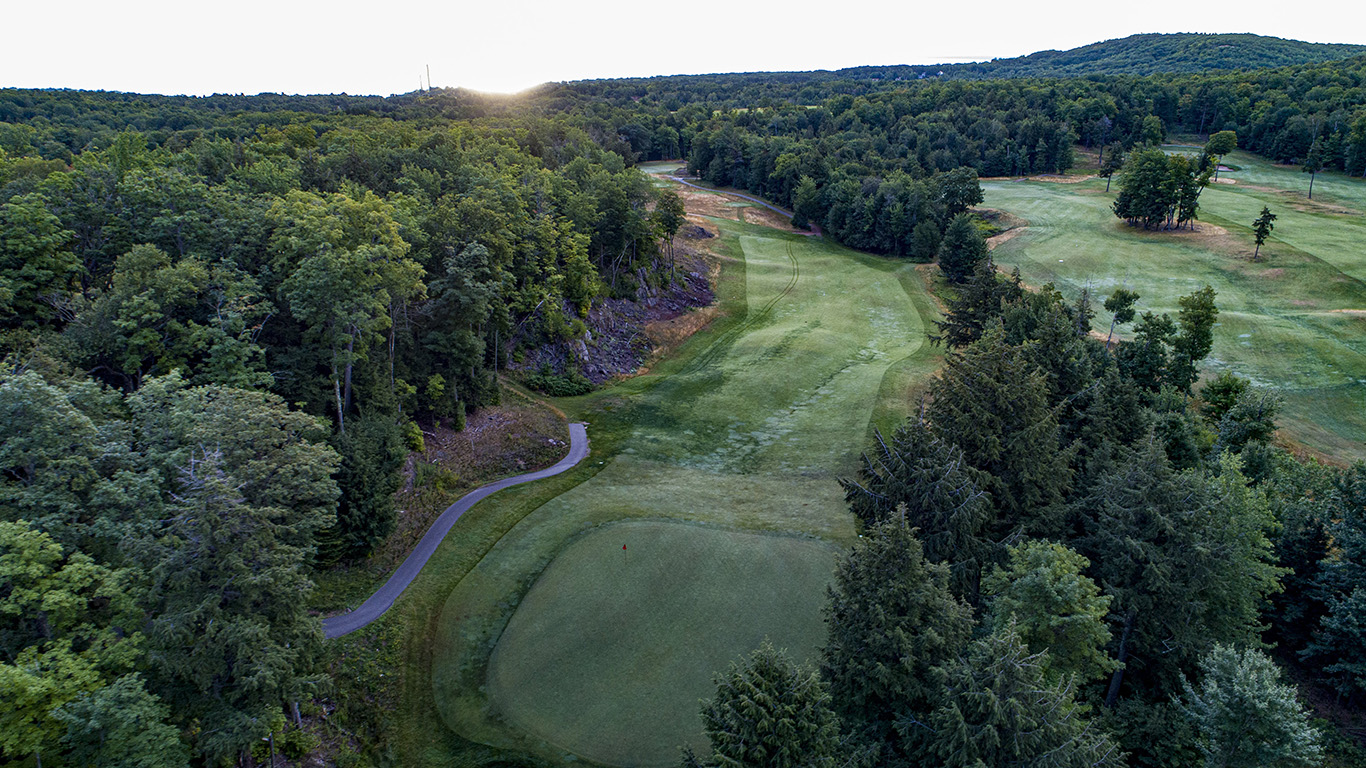
The 16th hole at Greywalls
-
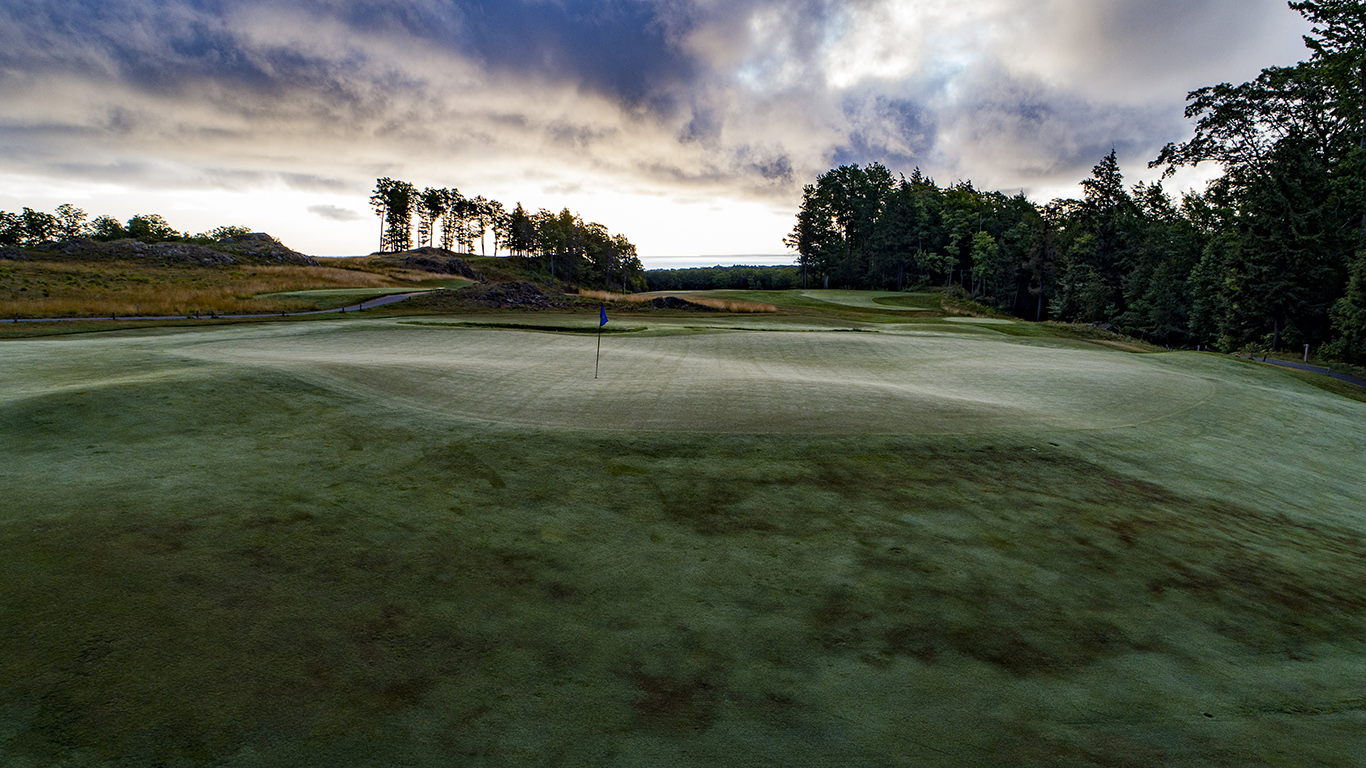
Behind the 17th green at Greywalls
-

The 18th hole at Greywalls
Greywalls is an escape from the ordinary. The only comparable course I have seen is Yale, the jagged topography of which C. B. Macdonald described as “a veritable wilderness.” Designed in different eras, Greywalls and Yale both faced the construction challenges that large rock formations and sudden elevation changes bring. Yet both, because they were brilliantly designed, are courses that have few equals in the thrill department. Greywalls and Yale each give you the feeling that you are conquering nature. Take the approaches to the par-4 10th at Yale and par-3 6th at Greywalls. Each revolves around an imposing obstacle—at Yale a large hill, and at Greywalls a giant rock outcropping. These thrills of the natural landscape make for unforgettable experiences—just as they did during my and my wife’s hike at Chapel Falls.
-
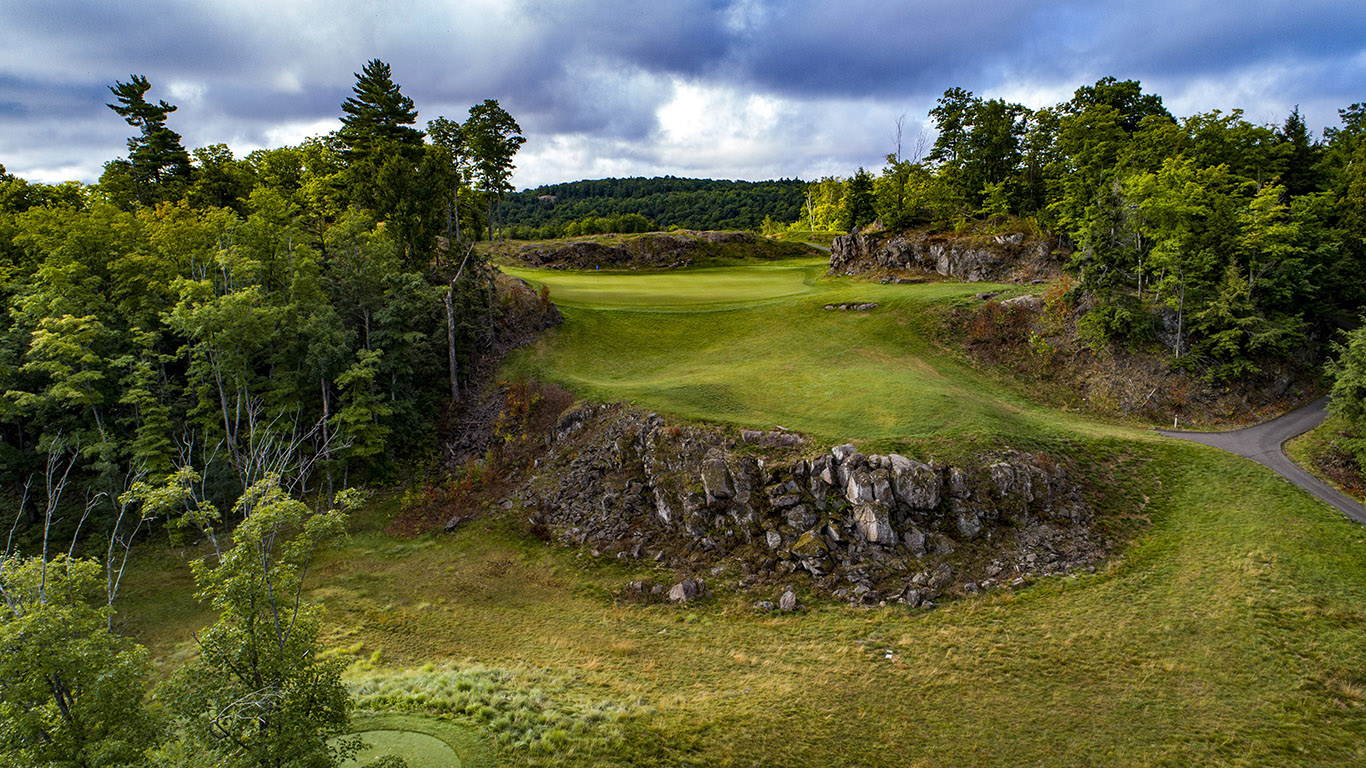
The 6th hole at Greywalls
-
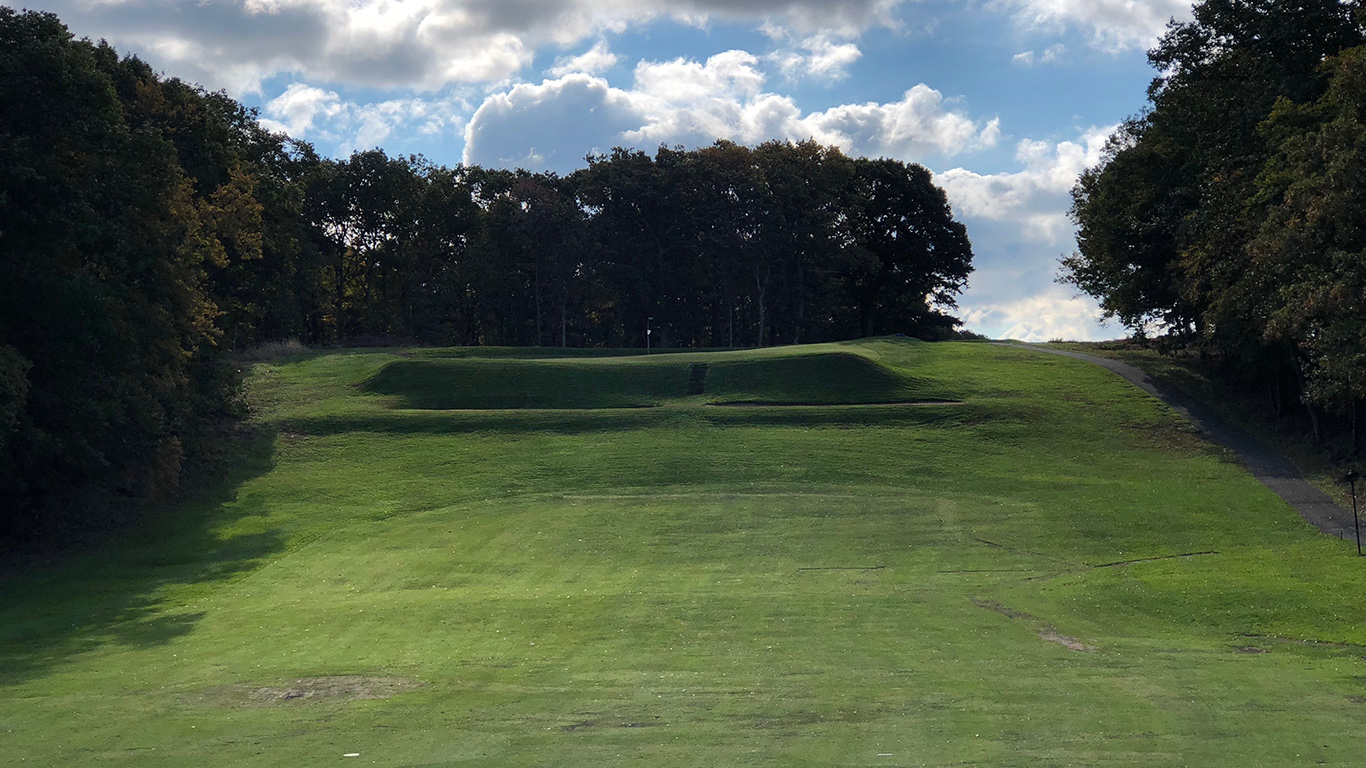
The 10th hole at the Course at Yale
After conquering Greywalls (or attempting to, at least), we packed up our car, a little sadly. It was 75 degrees and abundantly sunny, and we longed to continue our UP adventure. We each had waited 33 too many years to get up to the UP. The past few days had shown us a separate world, just a half day’s drive away from our normal lives. We promised each other that our next escape would come sooner than later.
On our hike, a group of fellow travelers told us about the 200-foot Grand Sable Dunes, just down the road from Chapel Falls. Until next time, we’ll just have to dream about it.
For golf fans who want to bring home a piece of this course, we offer a collection of Greywalls photography prints shot by the Fried Egg Golf team available in our Pro Shop.
Sign Up for The Fried Egg Newsletter
The Fried Egg Newsletter is the best way to stay up to date on all things golf. Delivered every Monday, Wednesday, and Friday for free!


 by
by 